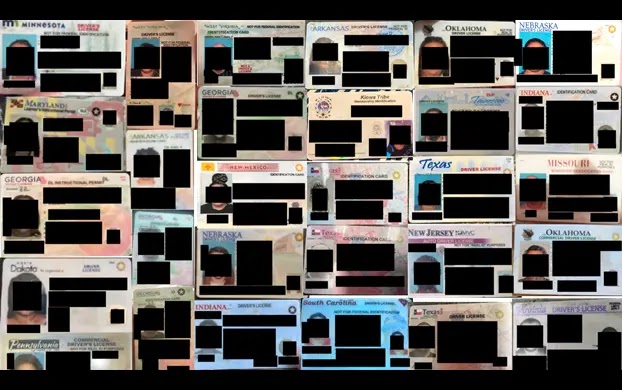The Rockerbox breach burst onto the threat-intelligence radar in early July 2025 when an unencrypted, 286.9 GB cloud repository holding 245,949 highly sensitive records was found openly indexed on the internet.
Investigators traced the trove to Rockerbox, a Dallas-based tax-credit consultancy serving employers nationwide; the cache contained driver’s licenses, DD214 military discharge forms, payroll tax documentation, and plain-text Social Security numbers, all discoverable through nothing more sophisticated than an HTTP GET request.
Within hours of disclosure the company revoked public access, yet the forensic window between exposure and takedown remains uncertain, raising the possibility that opportunistic crawlers or credential-stuffing scripts siphoned data long before defenders intervened.
The second layer of concern centers on the way attackers weaponize these records. Bulk PII sets allow synthetic-identity fabricators to blend legitimate SSNs, addresses, and employment histories into money-mule personas capable of opening credit lines or filing fraudulent tax returns that survive rudimentary KYC checks.
VPNMentor analysts noted that the directory structure itself leaked clues: each file path embedded employer name, applicant surname, a numeric token, and PDF form numbers—effectively publishing a one-stop reconnaissance map for social-engineering campaigns.
Worse, portions of the bucket permitted direct download while sister folders threw 403 errors, revealing an inconsistent ACL posture that advanced adversaries routinely exploit as a stepping-stone into wider cloud environments.
Although Rockerbox’s service stack shows no direct malware dropper, the incident illustrates a modern infection vector in which misconfigured object storage becomes the malware’s landing zone, eliminating the need for a malicious email payload altogether.
.webp)
By merely pointing commodity reconnaissance bots at public S3 endpoints, threat actors harvest rich identity seeds they later weaponize in credential phishing, macro-laced payroll stubs, or even polymorphic tax-filing Trojans, thereby turning benign paperwork into a propagation lattice that evades gateway filters looking solely for executable binaries.
Misconfigured S3 Bucket as Attack Surface
The heart of the breach is an all-too-familiar DevOps oversight: the bucket’s AccessControlList granted Everyone READ and LIST, enabling directory traversal without authentication.
Attackers exploit such missteps through automated scripts that enumerate world-readable buckets, fingerprint contents, and exfiltrate high-value objects.
A minimalist Python crawler demonstrates the workflow:-
import boto3, botocore, csv, datetime
s3 = boto3.client('s3', config=botocore.client.Config(signature_version='unsigned'))
bucket="rockerbox-public"
paginator = s3.get_paginator('list_objects_v2')
with open('loot-map.csv','w',newline="") as f:
writer = csv.writer(f)
writer.writerow(['Key','Size(bytes)','LastModified'])
for page in paginator.paginate(Bucket=bucket):
for obj in page.get('Contents', []):
writer.writerow([obj['Key'], obj['Size'], obj['LastModified']])
if obj['Key'].lower().endswith('.pdf'):
s3.download_file(bucket, obj['Key'], obj['Key'])The CSV output, revealing a predictable naming convention that aids automated targeting.
.webp)
Once the PDFs are fetched, adversaries parse plaintext metadata to pivot toward deeper compromise—for instance, correlating WOTC acceptance letters with employer EINs to tailor phishing lures that imitate state labor agencies.
| ACL Setting | Real-World Effect | Exploit Potential |
|---|---|---|
Everyone: READ |
Anonymous listing & download | Full bulk exfiltration |
AuthenticatedUsers: WRITE |
Any AWS user uploads objects | Malware seeding via rogue files |
BucketPolicy: Allow * |
Overrides IAM controls | Lateral cloud movement |
Mitigation begins with a “deny-all, allow-by-exception” policy baseline. Security teams should embed S3 ACL scanning into CI/CD pipelines and require encryption-at-rest using KMS keys tied to per-object labels, preventing future leaks even if public ACLs resurface.
Continuous monitoring tools such as AWS Config Rules or open-source CloudCustodian can trigger runtime revocation the moment a bucket drifts into public scope.
In the wake of this incident, Rockerbox faces not only reputational fallout but also heightened regulatory exposure under the FTC Safeguards Rule and state breach-notification statutes, underscoring how a single misconfiguration can rival advanced malware campaigns in both scale and impact.
Investigate live malware behavior, trace every step of an attack, and make faster, smarter security decisions -> Try ANY.RUN now
